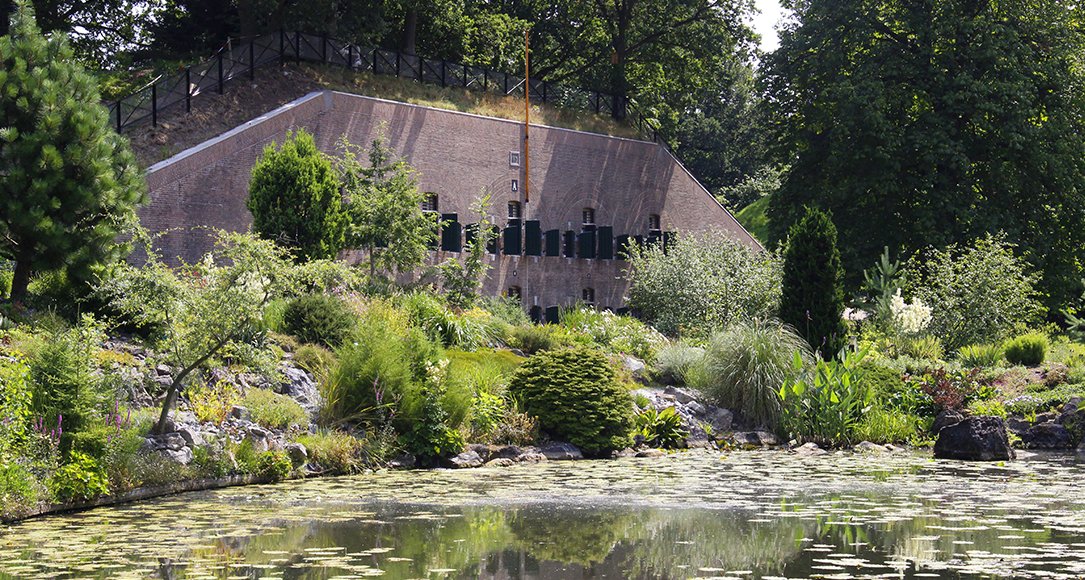The New Dutch Waterline included on World Heritage List UNESCO
The New Dutch Waterline is included on the UNESCO World Heritage List. One of the forts of the New Dutch Waterline - Fort Hoofddijk - is located in the Utrecht University Botanic Gardens.

The centuries-old complex of defensive works was added by the Dutch state to UNESCO's provisional World Heritage List in 1995. On 26 July 2021 the waterline was finally added to the World Heritage List. It is an extension of the Defence Line of Amsterdam, which has been on the list since 1996. Together, the World Heritage Sites will be called the 'Dutch Waterlines'.
Green ribbon through four provinces
The New Dutch Waterline is an intricate system of forts, locks, dikes, canals and concrete works that was deployed between 1870 and 1940. With the advent of aircraft, the waterline became obsolete in World War II. The line still runs as a green ribbon of 220 kilometers through four provinces, from Muiden to the Biesbosch.
Fort Hoofddijk in the Botanic Gardens
Utrecht was an important logistical hub and thus of great strategic value. This led to the construction of a large number of forts around the city. The Utrecht University Botanic Gardens were constructed on and around Fort Hoofddijk. The fort was covered with masonry and a thick layer of earth to protect it from the impact of modern grenades. Thus, only the facades remained visible, until today. Visitors to the Gardens can walk on the barracks and depots of the fort through the Rock Garden created there. Since 1963, the fort has been inhabited again. Now it does not house soldiers, but scientists who study the geomagnetic field.
Utrecht Psalter
Utrecht University is also in possession of the precious and special Utrecht Psalter, which in 2015 was added to the UNESCO Memory of the World Register for Documentary Heritage. The richly illustrated psalm book was created around the year 830 and has been kept in the Utrecht University Library since 1716.

